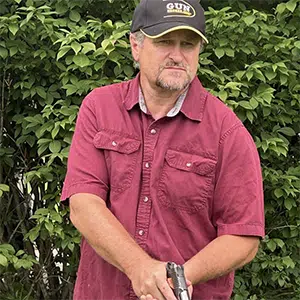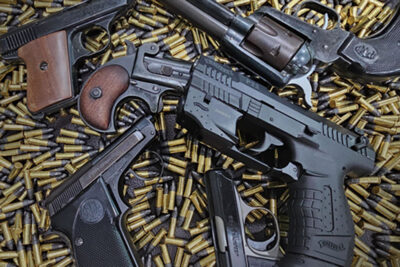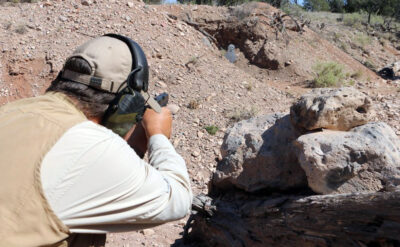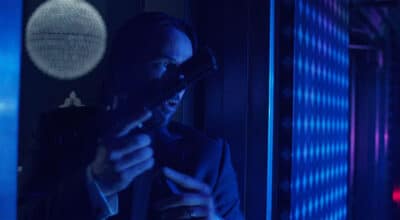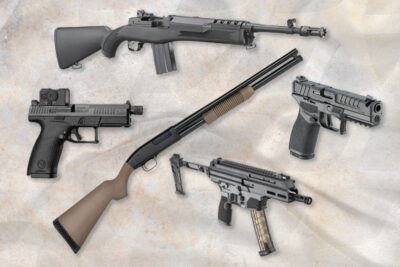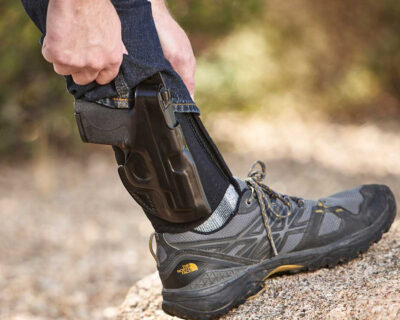Summer Training Series: The Failure Drill
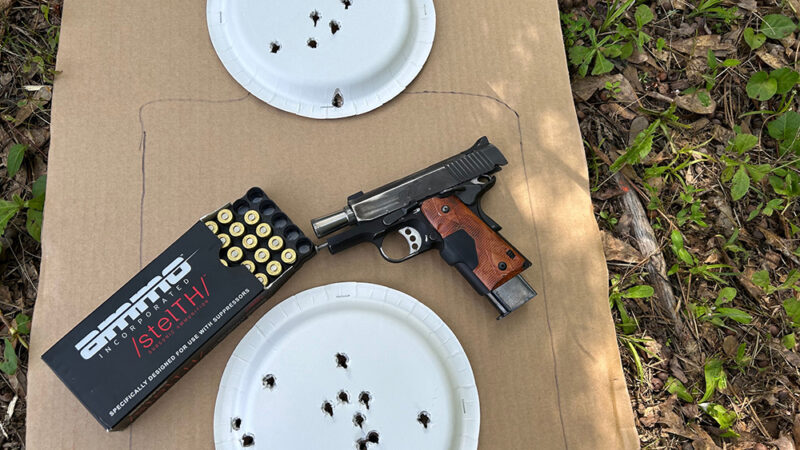
By Paul Rackley, GunBroker Editor
Training is a year-round endeavor. Even when it is hot, shooters should conduct training to keep skills sharp; shooting is a perishable skill. In fact, summer is a great time to fine-tune self-defense skills; it’s not like there is a whole lot of other things to do. While any type of putting holes in targets helps, those wanting to survive a defensive situation should consider drills, such as the failure drill.
Originally called the Mozambique, the failure drill comes from a real fight that happened in Africa. The story goes that Mike Rousseau, a soldier of fortune helping the Portuguese military combat rebels, came across a guerrilla rebel armed with a rifle. Rousseau, carrying only a 9mm pistol, fired two shots into center mass of the warrior at about 5 yards. This did not stop the assailant. So, Rousseau fired another round at his head, hitting the neck and spine, ending the attack.
Rousseau related that story to Lt. Col. Jeff Cooper, marine, cop and founder of premier training school Gunsite. Cooper then turned it into one of the most famous training exercises in the world. The failure drill teaches shooters to go from a “standard” reaction, putting two rounds center mass, to something more focused, ensuring the fight ends.
It is designed for attackers with body armor and those that are on drugs or are extremely motivated. And it is a drill that every self-defense advocate needs to learn, know and practice. This drill is extremely versatile, and can be used to teach critical self-defense skills well beyond its original intent.
Implementing the Failure Drill
Performing the Failure drill is simple in concept. The shooter fires two rounds in center mass, typically from low ready. He or she then assesses the situation, realizes the attacker is still coming and follows up with a single round in the head to end the attack. While many shooters perform the follow-up shot automatically, the assessment is actually an important factor. It pushes the shooter to think during a situation, rather than just react.
However, simply performing two shots followed by a single shot is a good way track speed and accuracy. In fact, it might not be a bad idea to perform the drill in both ways. Training is all about being ready for any possible situation, which basically means change happens fast in the middle of a fight.
Now, while the failure drill is an excellent training exercise on its own, it can also be amended to improve additional skills. These include drawing from retention, movement and even reloads. Shooters can also add in a shot timer to measure speed.
However, the most beneficial adjustment of this drill involves situational assessment, with a partner. The shooter starts in either low ready or retention at about 5 to 7 yards. At a signal, the shooter fires two rounds center mass, coming down to low ready for assessment. The partner then indicates, via a codeword, if the attack is ongoing, requiring the head shot. Swap out shooters as necessary.
This can even be performed as a group training exercise, with a range master running the show and ensuring safety. In any case, the failure drill is probably the best place to start to expand shooting skills. It’s relevant and adaptable, and could save your life.
Related Articles: Self-Defense Drills: The Strong-Side Draw
Related Articles: Skills Drills: Pistol Reloads; Tactical vs Speed
